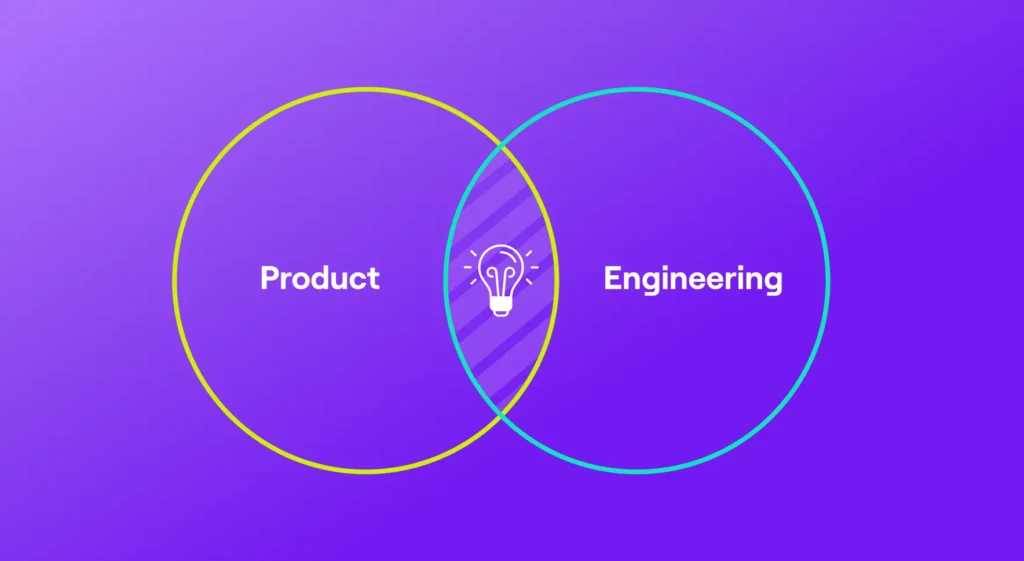Originally posted on HackerNoon.com.
No matter whether you’re just starting to build a business, growing a company, leading a major corporation, or anything in between, technical leadership will be one of the most important decisions and hires you make. In today’s software-driven world, many companies are being founded by technical founders themselves, but that’s not always the case. What should you do if you yourself cannot be the technical leader of the organization, or if you need to find a new one? Who should you hire, partner with, and consult about technical issues? How do you know you’re making the right decision when you bring a VP of Engineering on board?
As with most things in business, the answer largely depends on you. There are a few core questions you (or your executive team) need to answer that will drive the profile for which you’ll be searching. If you can answer these questions honestly, you’ll have a pretty good idea of what to look for:
What stage engineering team do you have now?
This aligns with our view on how engineering leadership can manage their teams through different stages of growth and change. The takeaway here is that leaders of smaller engineering teams can – and tend to be – more technical and hands on, but as the organization scales, the company will naturally demand someone with more business acumen and stronger managerial experience. As a startup, with just a few engineers (or maybe not even yet!), your engineering leadership needs to be a contributor as well, working as a member of the team in addition to its nominal leader. By the time the team grows past about 50 engineers or so, your VPE will be managing managers, have an interest in process, and need to spend a lot more time fighting business fires than technical ones.
What stage is your company right now?
In addition to team size, you have to consider the stage of your company from a market standpoint. Do you have a product in the market, or are you just trying to get something built? If your focus is primarily building a new product, you might consider bringing someone on board who has some amount of product instinct – you need someone who can help you actually invent or at least refine the thing. If you are already in the market, how many customers/people are using your product? Do you have a long running set of commitments to existing customers? Do you have SLAs that you need fulfill? How much are you inventing right now vs. maintaining? Do you have the right technical systems in place to support these demands? If the answer to that last question is “no”, or “I don’t know,” chances are you’ll want to look for someone who can be a little bit more technical and stand up those systems – things like the database and infrastructure that the product will rely on.
How frequently do you release new product?
You need to assess the frequency of change that your customers will be willing (or expecting) to take on. Is the product you’re building SaaS? Or are you building something that on-premise? Do customers expect you to constantly build new features and update the product for them, or would that place an undue burden and drive them away? Know the backgrounds of the engineering leaders you speak with and make sure that their former experience aligns with the speed of change expected at your organization. Chances are even a seasoned pro coming from an established hardware firm will have a hard time adjusting to the demands of a cloud software company.
In what type of product or industry do you operate?
The market for the software you are building may have a big impact on the person you’ll want to hire to lead your engineering team. This may be an overgeneralization, but take for example consumer versus enterprise software. The technological challenges of consumer software may not be exceedingly difficult to overcome at first, but the way you regularly engage those consumers should be advanced. In that case, an engineering leader with more of a product focus or consumer instinct may be the right choice. Alternatively, heavy tech companies need engineering leaders with less of a product lens and who are more equipped to overcome complex technological problems.
What do you want to be when you grow up?
Importantly, you’ll want to have an opinion on where you want to be a year from now [venture capitalists might even say two years]. Look at companies that you aspire to be like in a year, and find people who have a level of experience to match that profile. After all, you don’t want to hire for the team you have, but really to hire for the team you want to be.
Having said that, you can go too far in this direction. Many companies often fumble by overreaching and hiring not one but two stages ahead. This can be problematic. Too often I meet founding CEOs with 5 or 10 employees who say they want to be the next Airbnb and excitedly hire a big deal VPE or CTO. The issue is that their companies won’t feasibly be the next Airbnb in just a year or two, and the leaders they’ve just hired are not going to help get the product out of the garage, rather their superpower might be in leading really large developed teams. These leaders need project managers, admins, and full DevOps teams, putting processes in place that aren’t nimble enough – all of which will end up having you over spend and slow down. Or in the absence of that budget, they sit idly by, unable to get anything done.
You can also swing the pendulum too far the other way. When that doesn’t work out, the aforementioned founders turn to the opposite approach. Now with a 30 person engineering team who needs some good process in place, they hire someone who wants to tinker and has no feel for the business.
Be honest with yourself about where you are and where you are going, and hire for those parameters.
Why are you making a change?
The reality is, if you’re not just a startup getting off the ground, chances are something has gone wrong for you to be looking for a new VPE. Are services going down? Are you missing timelines and commitments to customers, are you not getting v1 out the door? Understand why you’re looking for a change and thus what you’re looking for. Solving each of these challenges will lead to different profiles of leadership to successfully right the ship.
Who will fit best with the management team’s style?
Lastly in this case, fit means more than simply the person’s ability to get along with and work with the other members of the management team. The question is of your team’s style. Is your management very business oriented, executive in tone, and traditional in management style? You’ll need someone who understands upward management and liaising between them and others in the organization. Alternatively if your team is more tactics oriented and scrappy, that same person might impede the natural flow of information through the company.
At Jellyfish, it is our goal to enable engineering executives to make informed, strategic management decisions. Too often we see business leaders fail to recognize the nascent value of their engineering management. We want to give those technical executives the engineering management tools they need to be great leaders – to be part of the conversation, help drive the product strategy and company direction, and execute the operational components of that strategy.
Ultimately, the person you hire should have the right mix of experiences and inclinations that matches with your company’s size, technology, and maturity. My number one rule is always that people can surprise you, so talk to as many people as you can, and hopefully you’ll find that one great fit that helps you take your engineering team and your company to the next level.






